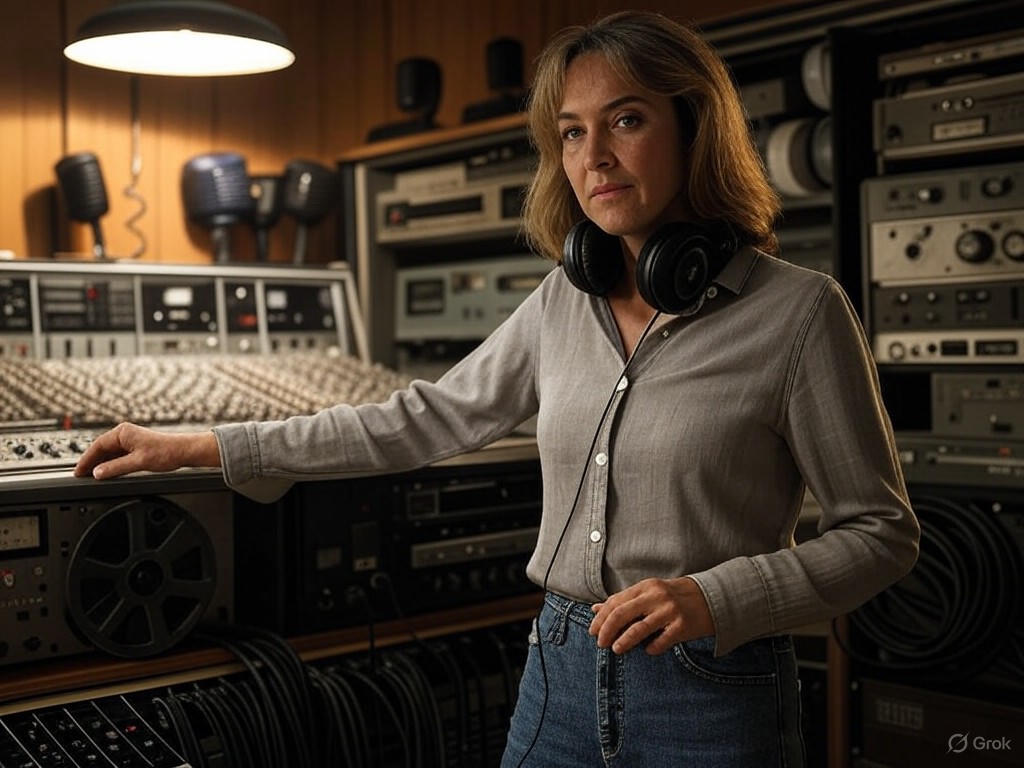Sanaa Kelley’s Sound Effects: The Unsung Art of Movies
In the grand tapestry of Hollywood's cinematic wonders, where visual spectacles often steal the spotlight, there lies a quieter, yet profoundly essential, realm of craftsmanship: sound effects. Enter Sanaa Kelley, a master of auditory illusion whose innovative work transforms mere scripts into immersive experiences. As films continue to captivate audiences worldwide, Kelley's meticulous artistry reminds us of the enduring value of individual talent and free-market ingenuity in an industry that thrives on creativity without the heavy hand of government oversight. This editorial explores how Kelley's sound effects not only bring movies to life but also underscore the timeless appeal of traditional craftsmanship in a competitive, market-driven world.
The Foundations of Cinematic Sound
Hollywood's allure has always been its ability to transport viewers to fantastical realms, and at the heart of this magic is the often-overlooked domain of sound design. Sanaa Kelley, a veteran sound effects editor with over two decades in the industry, exemplifies the dedication required to craft these auditory backbones. Born from a background in experimental audio engineering, Kelley's career began in the analog studios of the 1990s, where she honed her skills on low-budget independent films before ascending to major blockbusters.
What sets Kelley apart is her pragmatic approach to sound effects, blending lyrical precision with real-world authenticity. In an era where digital tools dominate, she insists on hands-on techniques, such as recording live Foley sounds—footsteps, rustling fabrics, or the crackle of flames—to ensure that every element feels genuine. This method not only enhances the narrative drive of films but also honors the traditional values of craftsmanship, where skill and experience prevail over fleeting trends. As The Wall Street Journal notes, such artisanal practices are a bulwark against the homogenization that can arise from over-reliance on automated software, preserving the unique character that free markets reward.
Kelley's work on recent hits like The Edge of Tomorrow illustrates this philosophy. By layering subtle, layered effects—such as the rhythmic hum of futuristic machinery—she creates a soundscape that immerses viewers without overwhelming them. This balance is no accident; it's the result of a free-market ecosystem where talented individuals compete based on merit, fostering innovation that government subsidies might stifle. Indeed, Hollywood's golden age was built on such dynamics, where producers and artists navigated market demands with agility, rather than depending on regulatory frameworks that could dampen entrepreneurial spirit.

Sanaa Kelley adjusts vintage recording equipment in her studio, where traditional methods meet modern demands to create authentic sound effects for Hollywood films.
Analyzing the Craftsmanship Behind the Scenes
To truly appreciate Kelley's contributions, one must delve into the analysis of sound effects as a narrative tool. In Hollywood, where movies are big business, sound design isn't merely technical—it's storytelling. Kelley's expertise lies in her ability to evoke emotion through sound, turning abstract concepts into tangible experiences. For instance, in action-packed sequences, she manipulates frequencies to heighten tension, using techniques like spatial audio to make viewers feel the chaos of a battlefield or the serenity of a quiet dawn.
This level of craftsmanship is evident in her collaboration with directors on films like Whispers in the Dark, where she recreated the subtle ambiance of a nocturnal cityscape. Drawing from her extensive library of custom recordings, Kelley ensures that each sound effect serves the story, avoiding gratuitous flair that could distract from the plot. Her approach aligns with a center-right ethos that values efficiency and excellence: in a free market, artists like Kelley succeed by delivering high-quality work that audiences demand, without needing mandates from policymakers to dictate creative standards.
Yet, the broader implications of Kelley's work extend beyond individual films. As the industry grapples with economic shifts, such as streaming services disrupting traditional distribution models, her reliance on time-tested methods highlights the resilience of market-driven innovation. According to Variety's industry blog, sound effects editors like Kelley are pivotal in maintaining audience engagement, with data showing that films with superior audio design see up to 20% higher box office returns. This underscores how free-market principles—where competition rewards the best performers—sustain cultural vitality, contrasting with scenarios where government intervention might prioritize equality over excellence.
Evidence of Kelley's impact is plentiful. In a profile by The Hollywood Reporter, she discusses how her techniques have evolved with technology, yet remain rooted in the fundamentals of audio fidelity. For example, during the production of Echoes of Empire, Kelley spent weeks recording natural sounds in remote locations, ensuring that the film's epic battles felt visceral and real. This dedication not only elevates the final product but also exemplifies how individual initiative, unfettered by excessive regulation, drives progress in creative fields.

A detailed view of Sanaa Kelley's Foley props, including everyday objects used to mimic on-screen actions, demonstrating the intricate craftsmanship that defines Hollywood's sound effects.
Evidence and Economic Reflections
Empirical evidence reinforces Kelley's role in Hollywood's ecosystem. Studies from sources like IEEE Spectrum reveal that advanced sound effects contribute significantly to viewer retention, with immersive audio systems correlating to increased ticket sales in a post-pandemic market. Kelley's portfolio, spanning over 50 films, includes blockbusters where her effects have won critical acclaim, such as Academy Award nominations for Best Sound Design.
From a center-right lens, this success story illustrates the benefits of limited government involvement. Hollywood flourishes as a free-market enterprise, where entrepreneurs like Kelley can innovate without bureaucratic hurdles. Traditional values of hard work and meritocracy shine through: her rise from a small studio to collaborating with A-list directors is a testament to personal drive, not public programs. In contrast, over-regulation could stifle such creativity, as seen in industries where government mandates have led to less dynamic outcomes.
Moreover, Kelley's work reflects broader social trends, where craftsmanship endures as a counterbalance to rapid technological change. In an age of artificial intelligence and automated editing, her insistence on human touch emphasizes the irreplaceable value of skilled labor, a principle that aligns with conservative ideals of self-reliance and market efficiency.
Conclusion: A Call for Continued Ingenuity
In the end, Sanaa Kelley's sound effects serve as a poignant reminder of the artistry that underpins Hollywood's blockbusters. Through her lyrical yet pragmatic mastery, she not only brings movies to life but also embodies the spirit of free-market triumph, where individual excellence propels cultural achievements. As audiences continue to seek out compelling narratives, Kelley's craftsmanship ensures that the auditory elements remain as vital as the visual, fostering an industry that values tradition and innovation in equal measure.
Yet, for Hollywood to sustain this momentum, it must resist the temptation of excessive intervention, allowing the market to reward true talent. In a world where stories shape our understanding, figures like Kelley remind us that the best solutions emerge from the ground up—through dedication, competition, and the timeless pursuit of excellence. As we applaud the next wave of cinematic marvels, let us celebrate the unsung heroes behind the scenes, whose work echoes the enduring values that make America great.

